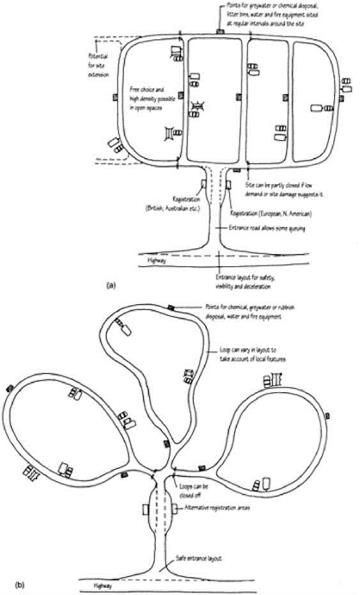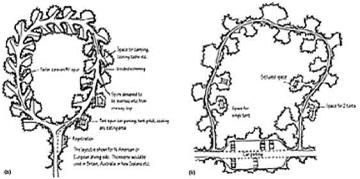It may be necessary to provide a range of facilities at campsites. The level and type of provision will depend on the character of the campsite, the type of users it is aimed at, and its robustness. This may be related to the ROS, to national, state, provincial or local regulations concerning public health and fire safety, and the demand for various activities by the users.
Toilets
Most campsites for tents should be provided with toilet facilities. The type and the amount of provision should follow the same concepts and specifications as those described for toilet provision at day-use sites in Chapter 6. Any of the types described will suffice, depending on the size of the site. To minimize the distance that people have to walk to the toilets it may be better to erect several small blocks in key locations around a dispersed site instead of a large and more economical central block. There may also
 |
(a) This typical layout used in many places, particularly by commercial operators, is efficient in using the ground. The vehicle circulation can be confusing, leading to some
areas being over-filled and others left relatively empty, depending on whether spaces are allocated at registration or are freely chosen. (b) The same area can be laid out better as a series of self – contained loops leading from the main entrance. This layout also helps pedestrian circulation and the siting of toilets and ancillary fixtures.
 |
Good examples of spur campsite layouts: (a) A one-way vehicle loop with spur areas set off it at intervals. (b) A walk-in tent loop where parking is restricted to one area and tent spaces are spread out along a loop trail.
be regulations determining the maximum number of pitches per toilet block that can be provided.



